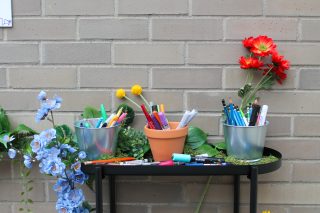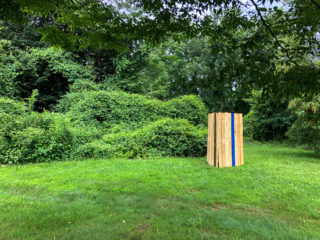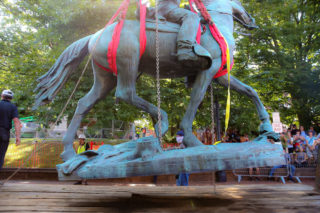
On Sunday the community of West End in Brisbane, Australia is coming together to celebrate the local creative talent. Complete with an arts and design market, performances, live painting—even live painting on a human wall of performers—this weekend’s West End Street Art festival is the culmination of a month-long painting process that brought new murals to Boundary and Russell Streets.
Besides facilitating the festival itself, the funds raised are also going to support Orange Sky Laundry, a Brisbane charity that provides a free mobile laundry service for the community’s homeless. The festival is organized by founders Ihab Imam and Jenna Williams, who told ABC News, “So many of these [artists] do stuff but it’s in small, isolated areas—if you bring it all together, it’s just got such gravity.”
Lindsey Davis: What motivated you to start this festival? What’s the atmosphere around public art and street art in West End?
Jenna Williams: Both of us are passionate about public art as we really feel it adds a huge amount to the atmosphere of public spaces when they are visually stimulating and colorful. We feel it’s a shame for so much great art to be relegated to laneways (alleys) and hidden spots because of illegal graffiti laws. We wanted this festival to showcase how much a community benefits from having art on the facades of buildings where everyone can access and enjoy it. Boundary Street already has more street art than any other street in Australia, so we just wanted to take that to a new level!

LD: A lot of street art festivals have enough to worry about in terms of finding funding and sponsors. What made you want to go even further and raise $10,000 for Orange Sky Laundry?
JW: Funding and sponsorship is definitely a handful and had we solely relied on that avenue, we would have struggled to get the festival up and running. We decided early on to incorporate a market to help fund the festival and also provide a huge point of interest for festival-goers. This was designed to help us generate a bigger buzz, to attract bigger crowds and enough value that people would want to contribute a small fee to enjoy it, so we could also help raise funds for a charity that does a lot to help vulnerable people in the West End community. Artists are overrepresented in the homeless population in Australia, and some great street art around the country has been created by artists experiencing homelessness. We wanted to use the festival as a platform to draw attention to this issue. Giving back in as many ways as possible is important to us.

LD: I know Australia has some of the most progressive street art laws on earth. Still, were there any bureaucratic hoops to jump through to get permission to paint these murals?
JW: We know how tough it is to get anything done when a government has the final say, so we purposely directed our attention toward getting the buy-in of private building owners for the murals. That was hard enough as most people find it too risky to back something like this in its first year. People don’t believe the big dream you’re selling them is possible. Once we had a few owners on board, we started to get more community momentum and from that point, it’s been easier to get the necessary approvals for the festival. That initial period of stakeholder engagement was really tough and took over 6 months of negotiations. We’re looking forward to next year being a lot easier when we prove it can be done!
LD: How long do you anticipate the murals staying up?
JW: The murals are permanent and won’t be painted over, unless the building owners change their mind. Each year we will add new walls and facades but the murals from each year are here to stay.

LD: What are you most excited for on Sunday?
JW: It’s hard to elevate one thing over the rest as the entire festival really represents the best of the best in creative talent. I love to shop so I’m excited to buy some amazing art for our walls at home. We have such an eclectic mix of talent that there will doubtlessly be something for every taste. I’m also super excited for the live painting exhibition. We usually only see the finished work so it’s going to be cool to see a bit of process. We’re also have a roving theatre performance by Theatre of Thunder who will be dressing up in some wild costumes, roaming the festival and then forming a human wall for some of the graf artists to paint, all to a trippy and ethereal live DJ back track. It’s going to be a pretty incredible experience.
LD: What do you want the international community to know about West End?
JW: That Melbourne isn’t the only place in Australia with culture to experience. West End has a very different cultural and political vibe from the rest of Brisbane—the local scene is bursting with talent, and there is a huge amount of love and care going into preserving West End’s sense of diversity and community. If Brisbane is on your travel itinerary, West End is the best place to see.

Buy tickets by tomorrow for the $5.50 presale price, or get them at the festival for $10. Find all the artists participating in Sunday’s festival on the West End Street Art Festival website.
Find all the permanent murals from the festival on the ArtAround map next week.




